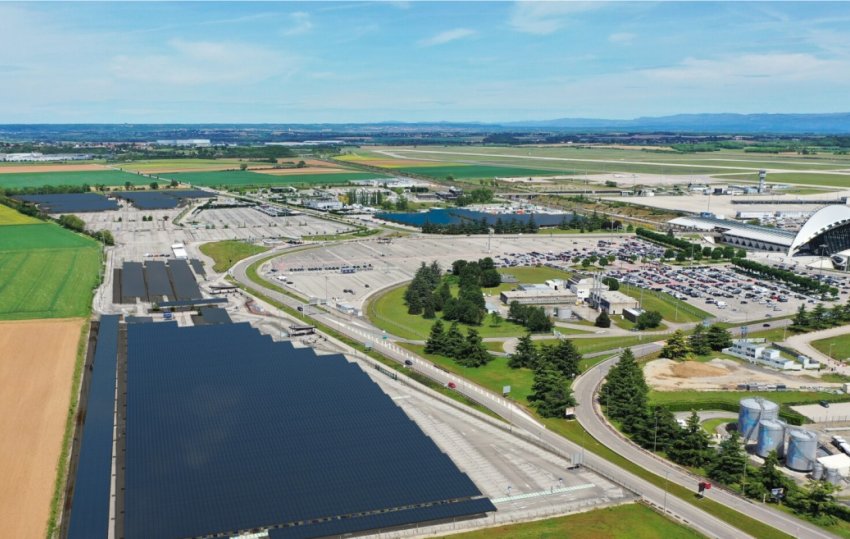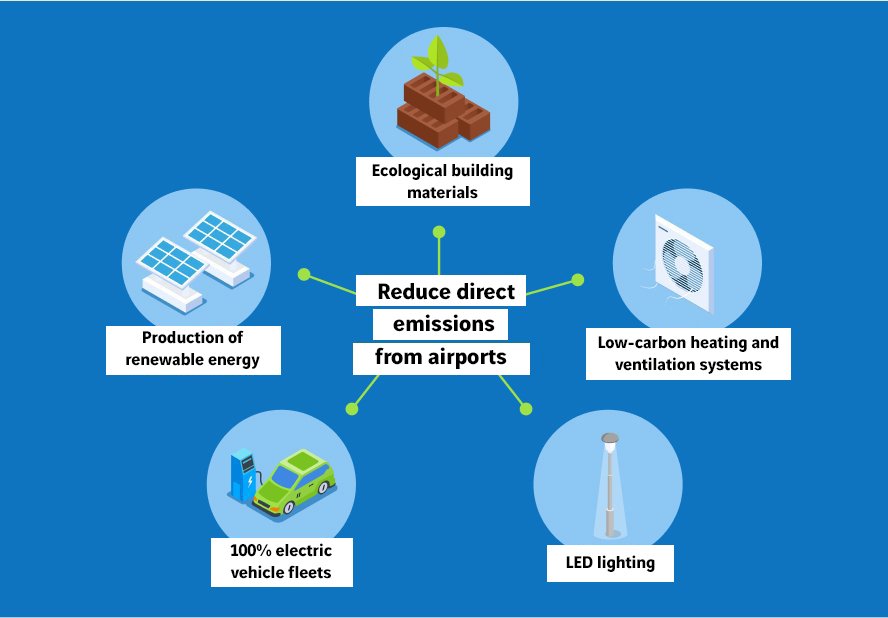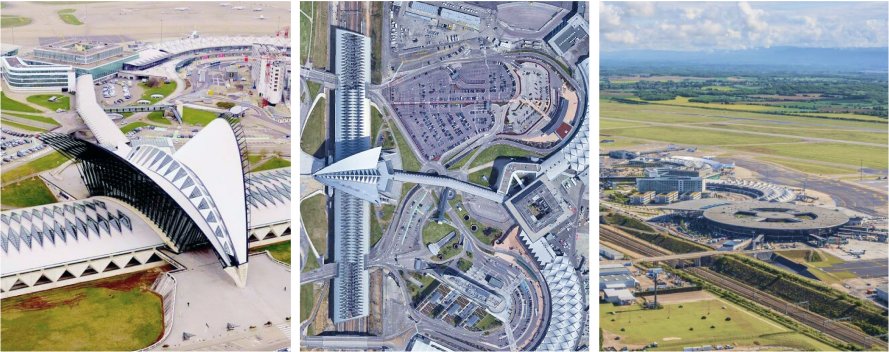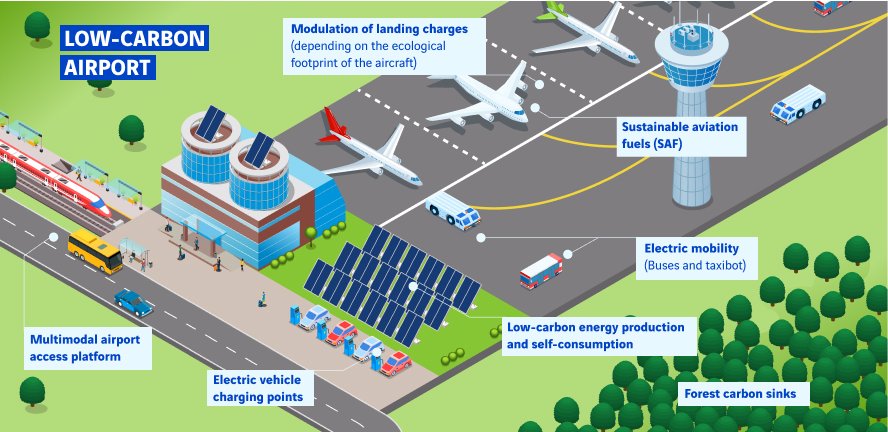
How to reduce airports’ carbon footprint
To decarbonise its operations and meet the Paris Agreement's objective of containing global warming, the airport of the future will have to leverage everything at its disposal. From more sustainable building materials to hydrogen-powered aircraft: discover the solutions that are already helping to reduce the carbon footprint of airports to achieve the goal of “zero net carbon dioxide emissions” by 2030 in Europe and 2050 in the rest of the world.
The challenge of decarbonising an airport's activities goes far beyond its ground infrastructure. For airports, it is a question of measuring greenhouse gas emissions throughout the airport value chain and working to reduce them concomitantly. The airport's direct emissions due to fossil fuels combustion (known as scope 1), of course, but also the direct emissions linked to its electricity consumption (scope 2). And finally, and this is undoubtedly what has the greatest impact, the indirect emissions, both upstream and downstream (scope 3). In the latter case, for example, it is necessary to use incentives to get airlines, passengers, service providers and airport partners to change their habits and reduce their carbon emissions.
Reducing direct emissions from airports: what can be done?
Designing and operating airports with lower greenhouse gas emissions
Building the airport of the future means choosing building materials with a lower environmental impact for terminals, hangars, runways, etc., from the outset. The airport on the island of Baltra, in the Galapagos archipelago, for example, was built using recycled materials. The same eco-design approach, with the French HQE (High Environmental Quality) label – this time within the VINCI Airports network – was used for the construction of Lyon airport's Terminal 1. The choice of more efficient, low-carbon heating and ventilation systems, less energy-intensive LED lighting, and a fleet of 100% electric vehicles: everything counts.
Turning airports into sources of renewable energy
Airports occupy large areas that can be used for infrastructure to produce renewable energy. Photovoltaic power plants now exist in Salvador de Bahia in Brazil, France, Serbia, Portugal, Japan and the Dominican Republic airports, where concessionaire VINCI Airports has become the leading private producer of electricity from renewable sources. These facilities now represent more than 44 MW of installed capacity. They not only provide airports with carbon-free energy for their own operations, but also inject the electricity produced into the local grid to support the energy transition in areas where energy can sometimes be produced mainly from fossil sources. And it doesn’t stop there: in Lyon, France, a new solar power plant over parkings will be built to be the biggest of its type on any airport in France.
Reduce airports’ indirect emissions across the value chain
Replace jet fuel with greener fuels
Biofuels made from renewable raw materials such as waste cooking oil or animal fat reduce greenhouse gas emissions by 80% compared to conventional petroleum-based aircraft fuel. Clermont-Ferrand, Toulon, Grenoble and London Gatwick airports already offer this to airlines. Taking things a step further, VINCI Airports has created an incentive system for modulating landing fees: a bonus or malus applied to companies depending, among other things, on the age of their aircraft and their use of biofuels.
Another promising candidate for the energy transition in aviation is green hydrogen. Although the technological challenges have not yet all been met – hydrogen is bulkier than aircraft fuel and means aircraft tank size and architecture need to be rethought – it is estimated that hydrogen-powered aircraft will be flying by 2035. And the increase in partnerships on a global scale, between public and private players in the sector (gas industry, aeronautics industry, etc.), bodes well. For airports, this means that the infrastructure will be completely redesigned to store liquid hydrogen. For example, Lyon-Saint Exupéry Airport has been chosen by VINCI Airports as a pilot site for introducing renewable hydrogen production and distribution infrastructure.
Limiting CO2 emissions from aircraft on the ground
Even if fuel consumption is lower on the ground, it can still be reduced by optimising taxiing and apron equipment. To achieve this, airports are offering new services and encouraging airlines to change their practices. For example, an aircraft can consume up to 300 kilos of aircraft fuel between the apron and the runway when both engines are running.
A possible solution is to switch off half of the engines to move the plane on the ground. The “taxibot”, a service already provided by some airports, remains the most effective solution for limiting emissions on the ground and optimising taxiing time. The aircraft is attached to an electric vehicle which moves it to the runway or boarding gate, thus avoiding significant fuel consumption. And even when the aircraft is standing, keeping the on-board system and air-conditioning working and firing up the engines drains a lot of aircraft fuel from the tanks. To address this, many airports have parking stands that allow aircraft to be powered with external electricity and air conditioning.
Supporting the airport sector in its transformation also requires encouraging airport users, both passengers and employees, to adopt responsible behaviour. The development of multimodal hubs to encourage access to public transport, and the provision of charging stations for electric or hydrogen vehicles are some of the incentives already in place.
Sequester residual incompressible H2 emissions
When it is no longer possible to reduce CO2 emissions, they can be sequestered by reforestation projects: these are called forest carbon sinks. In France, the Lyon-Saint Exupéry and Lyon-Bron airports are behind the creation of the first of these. This vast reforestation project, carried out in conjunction with the ONF (French Forestry Office) and the Rhône Department, covers 3.6 hectares and will make it possible to capture 500 tonnes of carbon dioxide and, so, absorb the residual emissions of Lyon's two airports. Other projects are planned in France, all certified by France’s Low Carbon Label.
How is the reduction of airports' carbon footprint measured?
While France’s HQE (High Quality Environment) sustainable infrastructure certification attests to the exemplary level of an airport, another certification is the Airport Carbon Accreditation (ACA). This international programme to reduce greenhouse gas emissions was introduced by Airport Council International. Certification is awarded following an independent audit by the ACA. Specifically, seven levels of certification measure the degree of an airport’s commitment, from mapping to reduction, optimisation, neutrality, transformation and, finally, transition. Each of the levels corresponds to a step taken by an airport: comprehensive mapping of greenhouse gas sources, calculation of scope 3 emissions, incentives for stakeholders to reduce their emissions, and offsetting the airport's residual direct emissions that cannot be avoided. Seven levels of certification measure the degree of commitment of airports, from mapping to transition, via reduction, optimisation, neutrality and transformation. Level 5 certifies that an airport has achieved and maintained a net zero carbon footprint on scopes 1 and 2, and has addressed the sources of scope 3 emissions that it can significantly influence on the way to net zero.
Of its 53 ACA-certified airports, VINCI Airports has 11 at the “Transformation” ACA4+ level, and 4, in France and Portugal reached the ultimate level ACA5 certification.
Most viewed
Explore more
Words from researchers: let's fight stereotypes!
Charlotte, a research fellow at École des Mines, and Erwan, a university professor and researcher at AgroParisTech, talk…
Fondation VINCI pour la Cité: opening the door to others is another way of reaching out!
With some 1.3 million organisations and 2 million employees, France can lay claim to a dynamic network of associations…
Sea water desalination: a solution for turning the tide on the water scarcity crisis?
As water shortages continue causing havoc in a growing number of regions around the world, an age-old idea is experiencing a…






